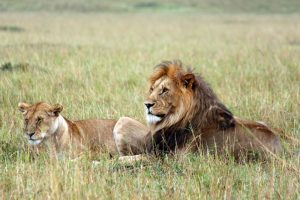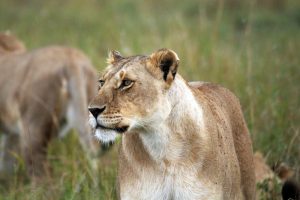Unless you’ve been hiding under a rock for the last decade, it shouldn’t be news to you that lions, along with approximately 59% of the world’s biggest mammalian carnivore species and 60% of the largest herbivores, are now categorised as ‘threatened with extinction’.

They are, thus, on the International Union for Conservation of Nature’s Red List. It’s not a list you want to be on. The protection of apex predators, like lions, is paramount to the health and survival of the ecosystem, and the consequences of any one species becoming extinct can be potentially catastrophic.

1. Africa’s lion population has reduced by approximately 43% over the past 21 years according to the IUCN. This big cat species (Panthera leo) is listed by the IUCN as Vulnerable; facing a high risk of extinction in the wild.
2. An estimated 20,000 lions are left in the wild. They are extinct in 26 African countries and have disappeared from 90% of their historical roaming grounds.
3. In South Africa, there are currently more lions kept in captivity for canned hunting purposes than there are in the wild. None of the animals being kept in captivity can be used in relocation or conservation programmes as they are often tame and genetically contaminated.
4. Sub-Saharan Africa is developing and expanding at a rapid rate, resulting in the lions facing habitat destruction, loss of their prey base to the bush meat trade and, ultimately, human-lion conflict.
5. At the rate that we are currently going, it is estimated that lions will be extinct in the wild by 2050.